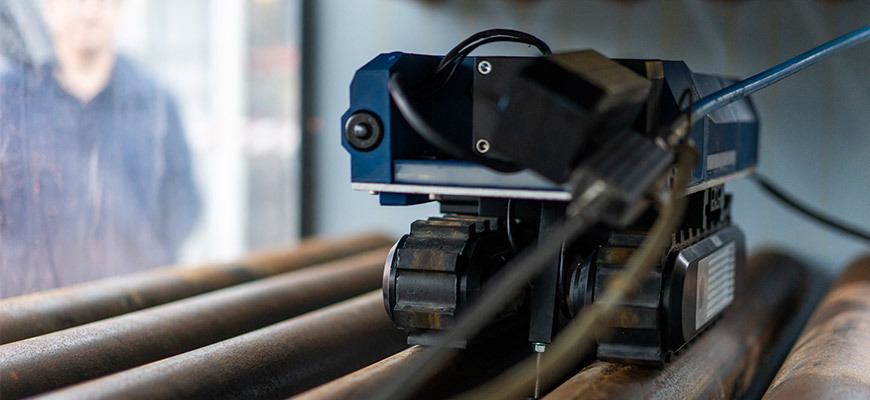Fired Heater Furnace Cleaning vs. Heat Transfer Efficiency Recovery: What’s the Difference?
Furnace cleaning and heat transfer recovery are two important aspects of maintaining fired heater performance. However, there are key differences, which we will explore in this article.
How Does Fouling Occur?
Fouling occurs when deposits accumulate on fired heater furnace tube surfaces. Fouling can come from contaminated fuel, debris from the surrounding environment, or fibre refractory particulate.
What are the Effects of an Inefficient Furnace?
Fired heater furnaces consume more fuel than any other asset on site, and if a fired heater is even one or two per cent inefficient, it can consume more than a million dollars in additional fuel over the course of a year.
Excessive fouling results in higher fuel consumption to achieve the required output, and increased emissions which can lead to government fines. Fouling also results in high stack temperatures and reduced heat transfer.
Cleaning Fired Heater Tubes
Fouling in heat exchangers, boilers, fired heater furnaces and other mission-critical assets can cause a drop in performance. Regular cleaning is required to maintain the design parameters of heat transfer equipment. Cleaning refers to the removal of dirt, scale, fouling, or other deposits that accumulate on heat transfer surfaces over time. This improves thermal efficiency by ensuring better contact between heat transfer surfaces.
Fired Heater Furnace Cleaning Methods
There are several common cleaning methods such as chemical cleaning, water or steam jetting and dry ice blasting. These methods all have pros and cons with expected results ranging from 20-30% of fouling removed from fired heater tube surfaces.
There are many heat exchanger cleaners and contractors in the oil and gas and petrochemical sectors. It is important to enquire about the techniques they will be using, whether it is appropriate for the type and level of fouling, and the expected results such as the percentage of fouling removed, the heat transfer efficiency improvements, and the estimated reduction of CO2 and NOx emissions.
Furnace Thermal Efficiency Recovery
Heat transfer efficiency recovery is the process of improving the performance and efficiency of a fired heater furnace, heat exchanger, or any other piece of heat transfer equipment if there has been a decline compared to design parameters.
Reduced heat transfer can occur for several reasons including fouling build-up, corrosion, erosion, or design inefficiencies.
How can Heat Transfer Efficiency be Restored?
To recover thermal efficiency, several approaches are recommended:
-
Remove Fouling
Regular cleaning, as aforementioned, is recommended to keep fouling under control and improve the contact of heat transfer surfaces. However, it is rarely sufficient on its own and it is advisable to conduct cleaning in conjunction with other heat transfer efficiency improvement methods, such as those listed below.
-
Preventative Fouling Measures
Preventative measures can be taken to reduce the frequency of heater cleaning by reducing the volume of fouling build-up on heat transfer surfaces. Filtration systems and surface coatings can help to reduce fouling and improve heat transfer efficiency.
-
Furnace Repairs and Maintenance
It is critical to perform regular fired heater furnace maintenance and repair damage at the earliest possible opportunity. Mechanical or operational issues can occur during operation such as damaged refractory (hot spots on the shell is often a sign of damage), warped, damaged, or scaled tubes, and other component malfunctions, all of which result in reduced fired heater performance.
It is always best if repairs and maintenance are carried out during a planned turnaround, which is more likely to be achievable if a planned preventative maintenance plan is in place. Unplanned shutdowns can cost refineries millions of dollars per day, however, there are online repair solutions available to prevent taking equipment offline, such as those offered by Hot-tek TM.
-
Retrofit or Redesign
In some instances, it may be necessary to modify or upgrade heat transfer systems to improve efficiency. This could mean replacing inefficient equipment, redesigning fired heater components such as the refractory*, or applying retrofit tube coatings or other preventative fouling measures.
*Download whitepaper: 5 Common Causes of Refractory Failure and How to Fix Them
A Turnkey Service
Cleaning and thermal efficiency recovery are not mutually exclusive but rather complementary approaches to maintaining and optimising fired heater furnace performance.
Regular cleaning is important for preventing heat transfer efficiency decline, and heat transfer efficiency recovery measures should be implemented when efficiency has already been compromised which is manifested in several ways including high stack temperatures, or an increase in fuel consumption or carbon emissions, for example.
Tube Tech’s convection section fouling removal service differs from traditional cleaning methods as a patented ROV system is mobilised which guarantees to remove 90%+ fouling from fired heater tubes. This restores maximum heat transfer component contact and reduces fuel consumption and CO2 emissions by up to 15%.
Furthermore, as a specialist heat transfer efficiency recovery provider, Tube Tech can offer solutions and advice on all aspects of fired heater performance and maintenance.

